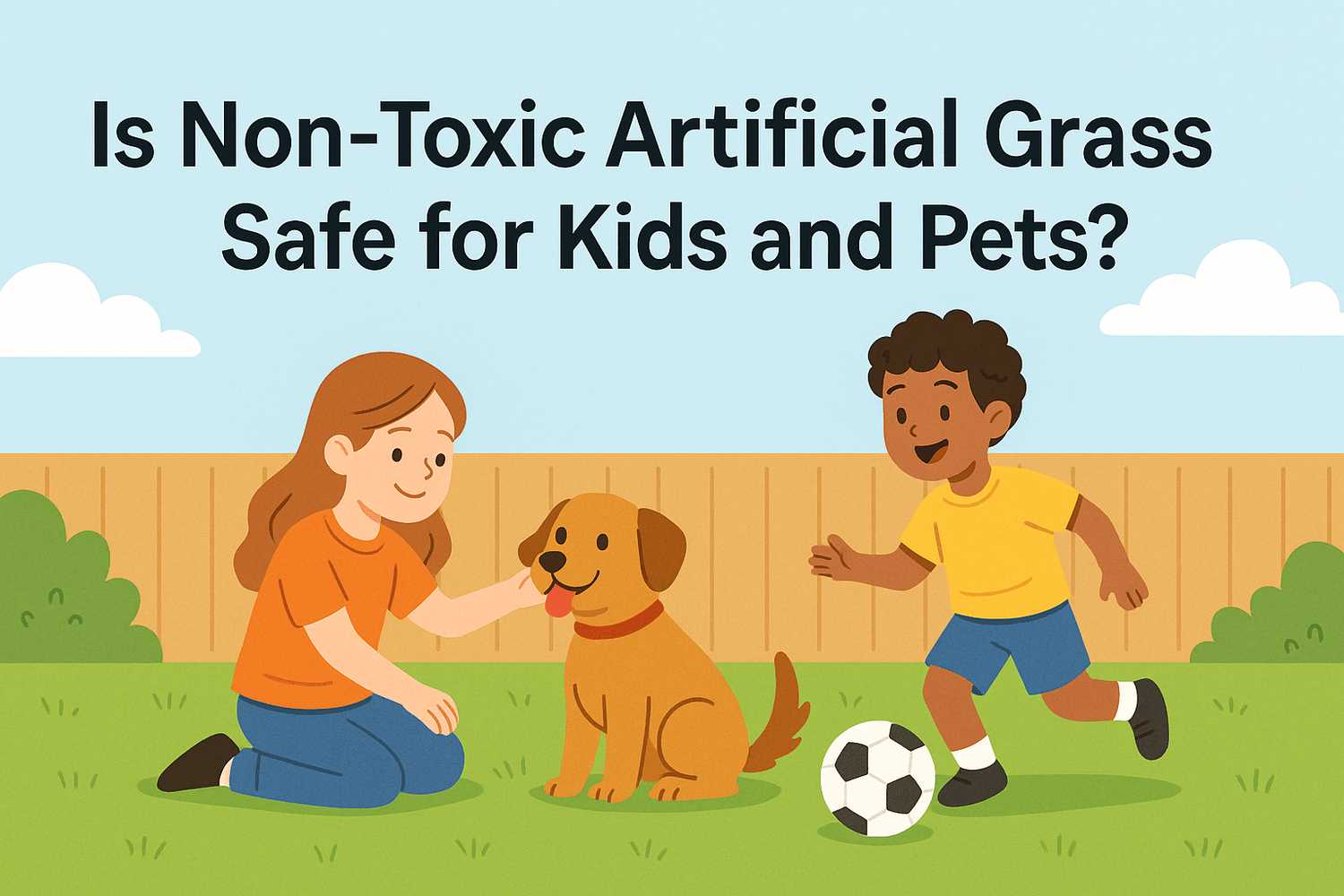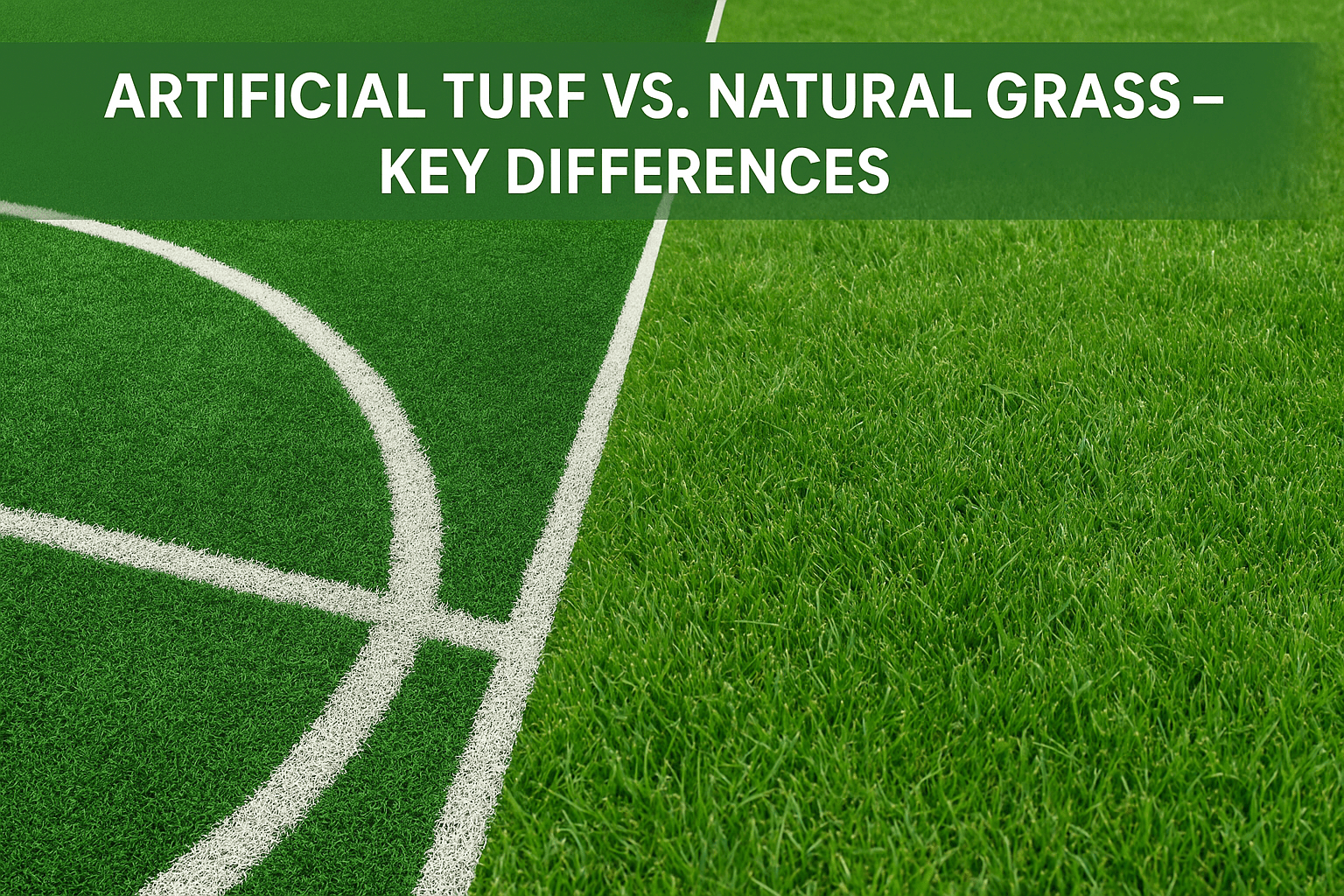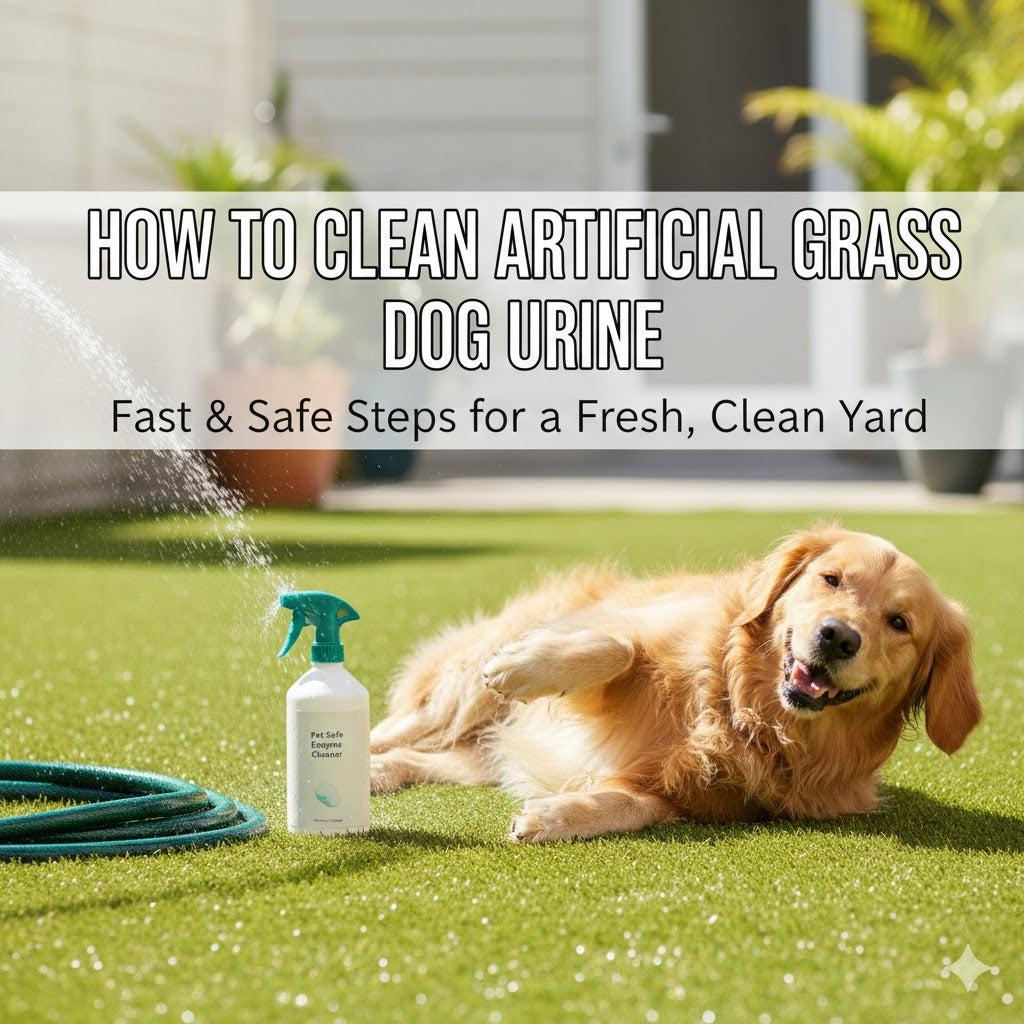More families are switching to artificial grass for their homes. It looks green all year, doesn’t need mowing, and is easy to clean. Parents love that it saves time and keeps the yard neat. But many still ask the big question: Is synthetic turf safe for kids and pets?
That’s a smart thing to ask. Kids play rough, and pets love to roll around outside. So the grass they play on should be clean, soft, and free from harmful stuff.
In this guide, we’ll look at how safe high-quality artificial grass really is. We’ll explain what it’s made of, what risks to watch for, and what safety standards to look out for. You’ll get real facts, not guesses, so you can confidently choose non toxic artificial grass for your family.
What Does “Non-Toxic Artificial Grass” Mean?
Most synthetic turf is made from safe plastics like polyethylene, polypropylene, or nylon. These materials are strong and made to last in the sun and rain. Among them, polyethylene is the softest, making it a good safer choice for kids and pets.
Good turf should be lead-free and tested for chemicals like PFAS (called "forever chemicals"). These tests make sure the turf won't harm your family. Products made in the USA usually meet stricter safety standards, so they’re more reliable.
Old synthetic turf and some cheap imports can still have dangerous stuff like lead or rubber dust. That’s why older turf or turf without testing may not be safe.
Today’s high-quality artificial grass is very different. It is made to follow modern rules like EN 71-3, which checks for toxic metals. Trusted turf brands also work with outside labs to test their products.

Main Health & Safety Benefits for Children
Artificial grass is smooth and flat. Unlike natural lawns, there are no holes, rocks, or roots that kids can trip over. It also dries fast after rain, so it’s less slippery.
Many types of synthetic turf come with shock pads underneath. These pads help protect kids if they fall. Some even meet standards for playground surfaces, which test for head injuries.
You don’t need to spray high-quality artificial grass with weed killer, bug spray, or fertilizer. That means your kids won’t be playing near toxic chemicals.
Real grass often needs all those treatments to stay green. But synthetic turf stays green without them. That’s safer for young children, especially toddlers who touch everything.
Bugs love damp soil, but artificial grass has no soil or thatch layer. That means fewer ticks, fleas, and ants.
This matters a lot if your child is sensitive to bites. No bugs also mean fewer chances of infection or rashes. Kids can play outside more without worrying about pests.

Key Pet Safety Features in Artificial Grass
Some synthetic turf has a special layer called antimicrobial backing. This layer helps stop bacteria from growing, especially in places where dogs pee. It also keeps bad smells away.
Good high-quality artificial grass is made to drain fast. Water and pet urine don’t sit on top; they go through the turf and into the ground or drainage layer.
This helps keep your yard dry and clean. You can rinse the turf with water and mild soap to freshen it up. That stops smells and cuts down on germs.
Pets love to dig, run, and roll. Older fake grass could feel rough or wear out fast. But today’s turf is stronger and softer.
It doesn’t tear easily from claws, and it won’t scratch your pet’s paws. That means pets can play safely without hurting themselves or ruining the yard.

Common Concerns About Artificial Grass Safety
Chemical Exposure from Infill
Some artificial grass uses infill, which is a material added between the blades to hold them up. The problem is that many older turfs used crumb rubber as infill. Crumb rubber is made from old tires. It can contain heavy metals, VOCs (harmful gases), and PFAS also called “forever chemicals.”
These can be unsafe for kids and pets. They may rub off on skin or turn into dust that gets breathed in.
The good news is, safer options are now available. Some better choices for infill include:
- Silica sand
- Cork
- Coconut fiber
Heat Buildup Risks
Unlike natural lawns, synthetic turf can get very hot in the sun. On a hot summer day, the surface may feel too warm for bare feet or paws. That can be uncomfortable, or even cause burns if touched for too long.
To reduce heat:
- Choose cooling turf designed to stay cooler under the sun.
- Add shade structures like umbrellas or trees.
- Rinse the turf with water before playtime. This helps cool it down fast.
Skin Sensitivity and Oral Contact
Kids often touch or even taste things they play on. So parents want to know what if babies or toddlers put fake grass in their mouth?
Most high-quality turf today is designed as non toxic artificial grass with hypoallergenic materials.It’s soft on the skin and doesn’t cause rashes or itching.
Still, it’s smart to clean the turf often and watch young kids during play. That way, your yard stays clean and safe for everyone.
Artificial Grass vs. Natural Grass for Families
Natural lawns need a lot of work. You have to mow, water, and spray them with fertilizers and weed killers. These chemicals can be harmful to kids and pets.
Artificial grass needs none of that. It stays green without mowing or spraying. It also doesn’t make pollen, so it’s better for kids with allergies. That makes non toxic artificial grass a safer choice for families. Plus, no bugs, no mud, and no mess.
With natural grass, rain can turn the yard into mud. In summer, the grass can dry out and turn brown.
But synthetic turf looks neat and green all year long. It doesn’t get soggy or patchy. Kids and pets can play on it anytime after rain, during summer, or even in cooler weather. Reputable brands clearly label products as non toxic artificial grass and provide certification details.
Safety Standards to Look For When Buying Turf
Not all artificial grass is the same. To make sure it's truly safe, look for turf that passes important safety standards.
One key test is EN 71-3, a toy safety rule. It checks for harmful metals like lead. If turf passes this, it’s safe for kids to touch and play on.
Another test is the Fall Height Test, which includes GMAX and HIC scores. These tests measure how well the turf can soften a fall. This is important for yards with playground equipment.
Top brands like Lita Grass make turf that meets high safety levels. Many of their products are also approved by ASTM (American Society for Testing and Materials) and follow ADA (Americans with Disabilities Act) rules.
How to Maximize Safety in Installation and Use
To make turf safe, start with a good install. The ground should be flat and firm. Use the correct infill, like sand or cork not crumb rubber. Make sure the turf drains well and the seams are tight, so nothing lifts or shifts.
Even low-maintenance turf needs a little care. Rinse it often, especially in areas pets use. Brush it to keep the blades standing tall. Use mild soap and a pet-safe cleaner when needed.
Tips for Choosing the Best Turf for Families
Not sure which non toxic artificial grass to buy? Start by checking the product label or website. Look for words like “lead-free,” “non-toxic,” “PFAS-free,” and “pet-friendly.” Ask for proof of safety certifications like EN 71-3 or fall rating scores.
If you have pets, choose turf with antimicrobial protection and fast drainage. For kids, pick turf with a soft surface and a shock pad underneath.
|
Aspect |
Details for Kids |
Details for Pets |
Materials & Safety |
Common Concerns |
Best Practices |
|
Surface Safety |
Soft, even surface; reduces falls with shock pads |
Durable yet gentle on paws; doesn’t tear easily |
Made from non-toxic plastics like polyethylene |
Older turf may contain lead or rubber dust |
Choose turf with EN 71-3 and Fall Height Test certifications |
|
Chemical Exposure |
No need for pesticides, weed killers, or fertilizers |
No toxic sprays needed; safe to roll or sleep on |
Lead-free, PFAS-free, certified safe |
Infill (crumb rubber) can release VOCs and metals |
Use natural infill like silica sand, cork, or coconut fiber |
|
Health Benefits |
Hypoallergenic; reduces grass pollen and allergies |
Antimicrobial backing helps reduce bacteria from urine |
Modern turf tested for toxins; USA-made preferred |
Skin contact or oral exposure concern in toddlers |
Clean turf regularly; supervise babies during play |
|
Cleanliness |
Dries quickly after rain; stays clean longer |
Easy to rinse and deodorize with mild soap |
Drains well; resists mold and mildew |
Heat buildup can cause surface to reach 140°F |
Rinse turf during hot days or use cooling turf/shade |
|
Playtime Reliability |
No mud, no holes, no bugs; play anytime |
Won’t trap ticks, fleas, or ants; pet-friendly |
Withstands rough play and outdoor conditions |
Older or cheap turf may wear down fast |
Install on flat ground; use correct infill and sealing |
|
Buying Tips |
Look for shock pad, soft surface, fall ratings |
Choose antimicrobial backing and fast drainage |
Verify “non-toxic,” “lead-free,” “PFAS-free” on label |
Not all turf is the same—beware of outdated products |
Ask for safety certification proof from brand or supplier |
For families looking for certified non-toxic artificial grass, LITA Grass offers products that are lead-free, PFAS-free, and safe for both children and pets. Their turf options feature soft polyethylene fibres, antimicrobial backing, and excellent drainage.
Conclusion
Yes, non-toxic artificial grass can be a safe and smart choice. It has soft, clean surfaces with no sharp rocks, bugs, or chemicals. It drains fast, needs less care, and is fun all year.
Just remember, not all turf is equal. Pick products that meet safety standards and are tested for kids and pets. And make sure it’s installed and cleaned the right way.
Looking for artificial grass that’s truly safe for your kids and pets? Explore LITA Grass for certified, non-toxic turf made with your family in mind.



Leave a comment
This site is protected by hCaptcha and the hCaptcha Privacy Policy and Terms of Service apply.